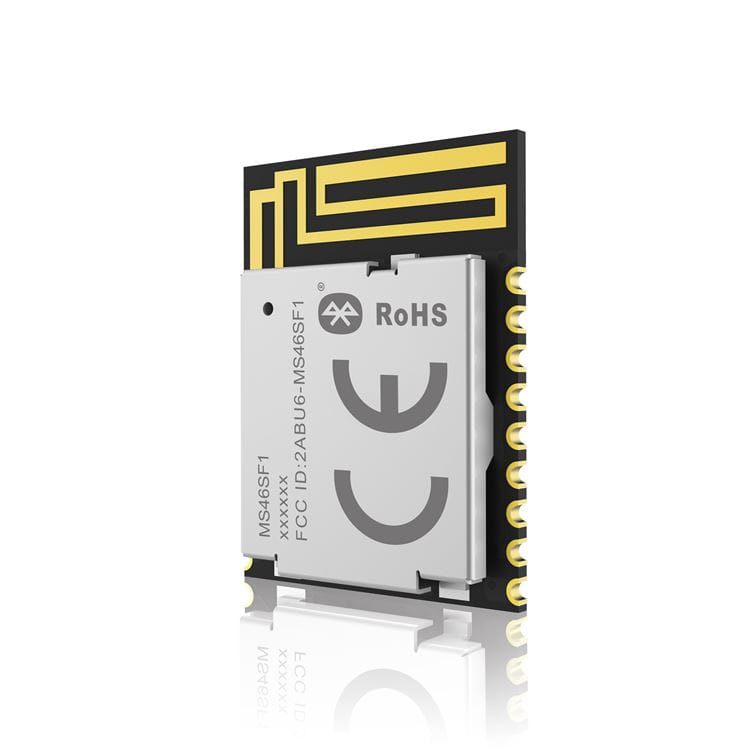Nordic Semiconductor today announces that Shenzhen, China-based smart device and IoT solutions developer, Shenzhen Minew Technologies Co., Ltd., has selected Nordic’s latest addition to its nRF52 Series, the nRF52805 Bluetooth® 5.2 /Bluetooth Low Energy (Bluetooth LE) System-on-Chip (SoC) to provide the processing power and wireless connectivity for its ‘MS46SF11’ module.
Tiny WLCSP
The nRF52805 SoC is provided in a wafer level chip scale package (WLCSP) measuring just 2.48 by 2.46mm, supporting both cost- and space-constrained wireless designs, and enabling the module to be supplied in a compact 15.8 by 12 by 2mm form factor, including a PCB trace antenna. It is intended for applications including beacons, disposable medical devices, sensors, styluses and presenters. The module can also be deployed as a network processor, allowing another microcontroller to operate in collaboration with the nRF52805 SoC while the SoC’s own powerful 64-MHz 32-bit Arm® Cortex®-M4 processor supervises the Bluetooth LE connectivity.
In addition to the Nordic SoC, the module also integrates an industrial grade 32.768-kHz crystal oscillator to for enhanced frequency accuracy and stability, while its -40° to 80°C operating temperature range makes the module suitable for use in demanding environments. FCC, CE, and RoHS pre-certification reduces user costs and time-to-market.
In addition to the Arm Cortex-M4 processor, the nRF52805 SoC includes 192KB Flash plus 24KB RAM. The multiprotocol (Bluetooth LE/2.4GHz) radio offers up to +4dBm power output and -97dBm sensitivity (1 Mbps Bluetooth LE) for a link budget of 101dBm. The radio’s peak power draw is only 4.6mA (TX 0dBM, RX 1Mbps) and the SoC’s current draw is as low as 0.3µA in System OFF and 1.1µA in System ON with 24KB RAM retained and RTC running. The SoC features a range of analog and digital interfaces such as SPI, UART, and TWI, a two-channel 12-bit ADC, and ten GPIOs.
Memory-optimized SoftDevice
The nRF52805 is currently supported by the S112 SoftDevice, while support for the S113 SoftDevice will follow soon. The S112 and S113 SoftDevices (Bluetooth 5.1-qualified protocol software) are memory-optimized peripheral “stacks” which support high-throughput 2 Mbps and CSA #2 features. The stacks support up to four connections as a Peripheral concurrently with a Broadcaster. In addition, the number of connections and bandwidth per connection is configurable, enabling memory and performance optimization. Both the S112 and S113 also support LE Secure Connections, improving security compared to LE Legacy Pairing. S113 also supports LE Data Packet Length Extension, resulting in higher throughput and less overhead per packet.
“Minew has been working with Nordic Semiconductor for years using many of its state-of-the-art solutions,” says Eddie Wang, Senior Marketing Manager, Shenzhen Minew Technologies Co., Ltd.
“We selected the nRF52805 SoC for our MS46SF11 module because its high performance Arm Cortex-M4 processor, compact size, and extremely low power consumption makes it ideal for cost sensitive two-layer PCB wireless designs.”

